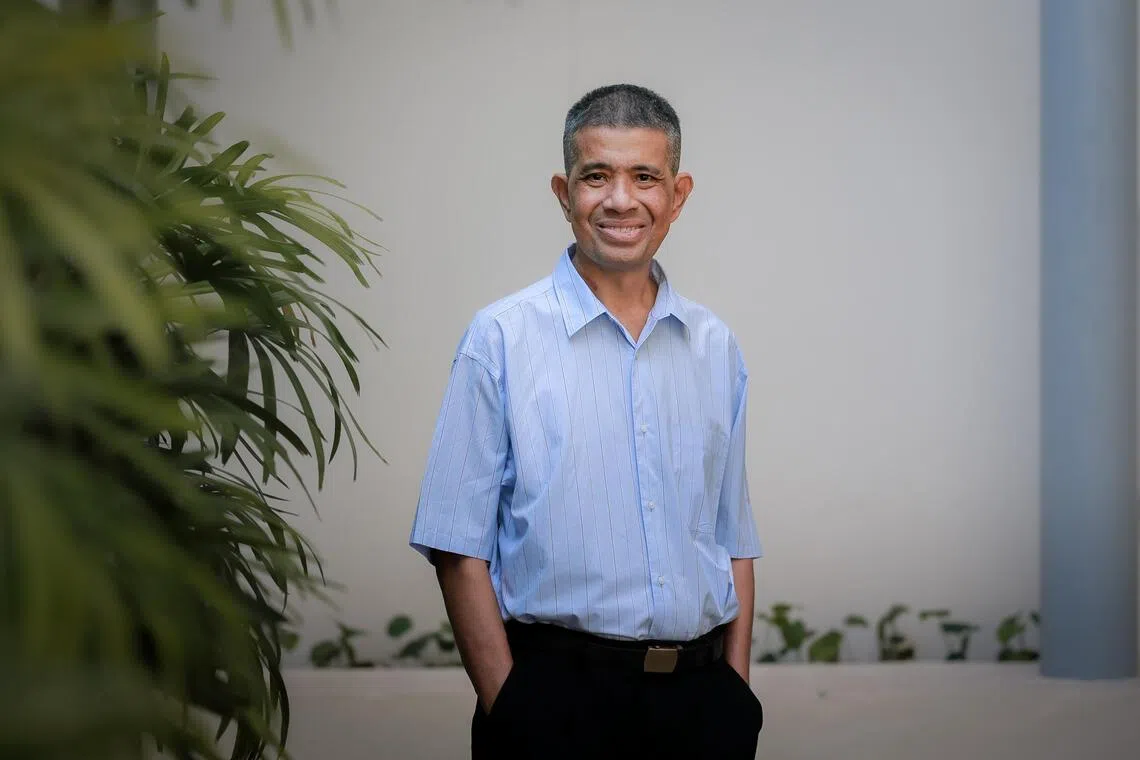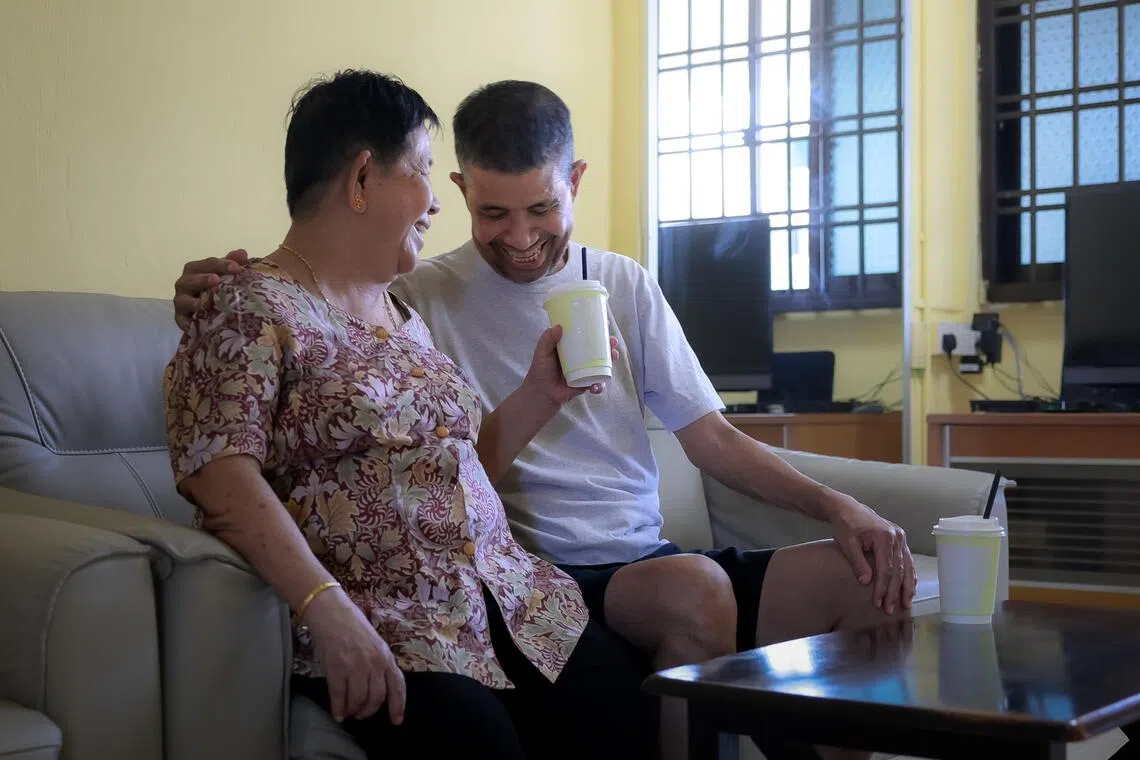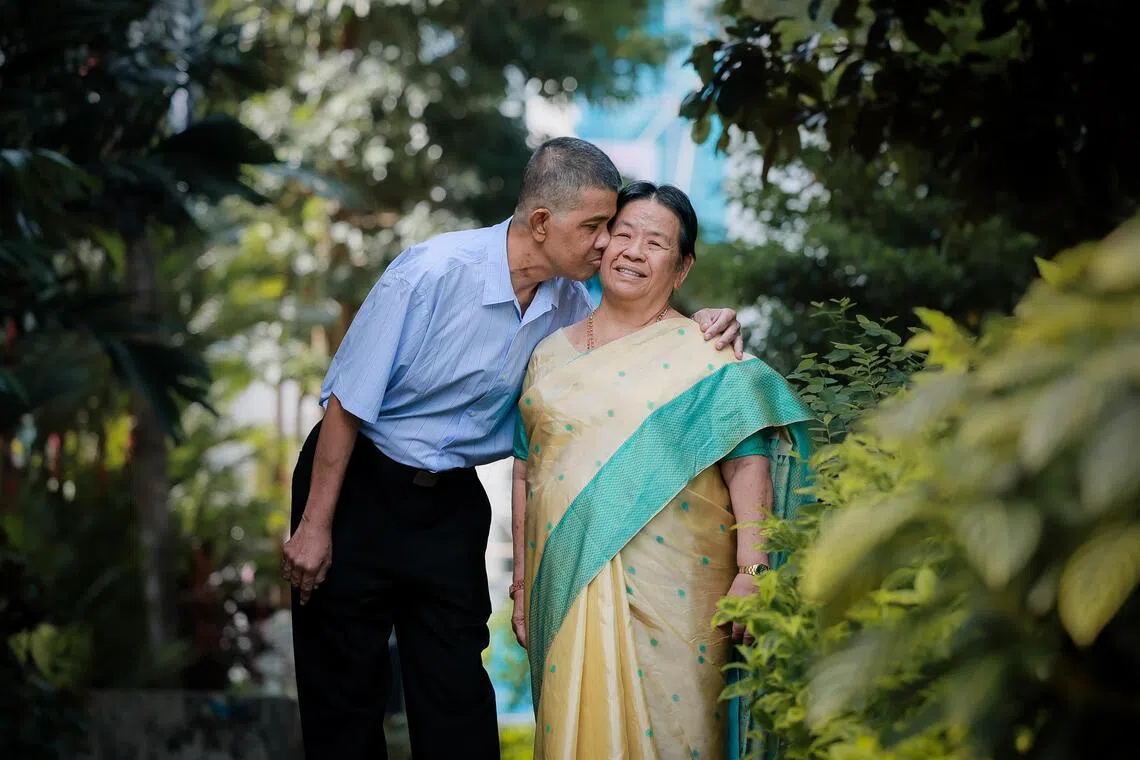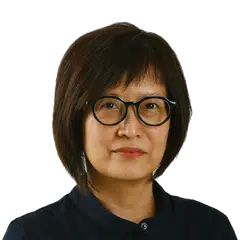Life After... getting a transplant: He lived with a mechanical heart pump for more than 9 years
So much of the news is about what’s happening at the moment. But after a major event, people pick up the pieces, and life goes on. In this new series, The Straits Times talks to the everyday heroes who have reinvented themselves, turned their lives around, and serve as an inspiration to us all.
Sign up now: Get ST's newsletters delivered to your inbox

Mr Rajamohan Pekrisamy’s ordeal began after he developed heart failure following a severe flu infection that landed him in hospital some 15 years.
ST PHOTO: GAVIN FOO
Follow topic:
- Mr. Rajamohan received a heart transplant in 2025 after living with an LVAD for nine years due to viral cardiomyopathy. This allowed him to enjoy foods he previously couldn't, like soya milk.
- Prof. Sim advised Rajamohan to lose weight to improve his chances of receiving a heart transplant. After losing 30kg in six months, he became Singapore's 100th heart transplant recipient.
- Rajamohan is grateful to the donor's family and NHCS. He looks forward to working again and caring for his mother, while also fondly remembering his LVAD routine.
AI generated
SINGAPORE – In September, about eight months after he received a transplanted heart, Mr Rajamohan Pekrisamy took his first sip of warm soya milk.
It was a familiar comfort he had been deprived of for more than nine years, the majority of which he lived with a mechanical heart pump, called a left ventricular assist device (LVAD), in his chest to help his failing heart.
“I couldn’t eat foods high in vitamin K and (that included) all the soya stuff, which I love,” said the 54-year-old former security officer, who had been on the transplant waitlist since April 2016. Vitamin K can counteract the blood thinners that LVAD patients typically take.
That first cup of soya milk came from a carton purchased from a supermarket, and was served warm, the way he likes it. “Everything is good – my sleep, my food, my hobbies,” said Mr Rajamohan, who lives with his mother.
He is now enjoying his newfound freedom, sleeping on whichever side he likes and walking unencumbered by the LVAD driveline – the cable connecting the pump to an external controller and battery pack, which he had to carry everywhere.
Most of all, he can now look for work, free of the stigma and fear attached to that device and bag that he had to wear.
Mr Rajamohan’s ordeal started with a severe flu infection that landed him in hospital some 15 years ago. He had developed viral cardiomyopathy, or heart muscle damage, caused by a viral infection. He was treated with heart failure medications, but his condition worsened, and he experienced shortness of breath.

Mrs Saroja Pekrisamy giving her son Rajamohan Pekrisamy soybean milk at their home in Bukit Purmei on Sept 25.
ST PHOTO: GAVIN FOO
Associate Professor David Sim Kheng Leng, the head of cardiology at the National Heart Centre Singapore (NHCS), said that Mr Rajamohan was among the minority of patients whose heart failures continue to progress.
It got to the point where he had to sleep while sitting up because he could not breathe otherwise. It is a classic symptom of heart failure, said Prof Sim.
In the severe stage, patients will feel breathless even if they are not moving, or if they are lying down, he said.
“Some patients describe having this drowning sensation when they are lying down,” he said.
Mr Rajamohan, the youngest of three children, said he is the second in his family to develop heart problems, after his late father, who died of a heart attack at the age of 47.
Life after being implanted with a heart pump
In November 2015, Mr Rajamohan had open-heart surgery to be fitted with an LVAD to help his weakened heart pump blood throughout the body.
Mr Rajamohan remembered going sideways when he took his first steps after the surgery, forgetting that the device inside him weighed 2kg. Eventually, he became used to living with a wire protruding from his body, connected to a bag of batteries he had to carry at all times – slung across his shoulder or in a vest he wore.
Although the device returned a level of normalcy to his life, it put an end to the work that he had enjoyed until his frequent hospital admissions. For 15 years, he had been a security officer, helping to guard buildings and keep the occupants safe.
“I tried to apply for security guard roles, but when they saw the LVAD, they never called me back,” he said. He and his mother relied on their savings, family contributions, and government assistance to get by.
The LVAD also changed him from a 1.82m man of 70-80kg to 115kg at the peak of his weight gain, he recalled.
“My heart was not pumping well before, so I didn’t feel the hunger. After the operation, everything was OK and I was very hungry,” he said. “Sometimes, I would eat lunch (before getting) popcorn at the cinema, and then I would eat a burger and then go back to eat dinner.”
Preparing years in advance for the big day
Patients suffering from end-stage heart disease and under the age of 60 are the most likely candidates for a heart transplant. The big challenge is finding a suitable heart. With Mr Rajamohan weighing more than 100kg, his chances of finding one were slim, to say the least.
“The coordinators and the doctor, they told me: You lose weight, you’ve got a heart.” He recounted Prof Sim asking him, “Which one do you want, or do you want to carry this thing (LVAD) all your life?”
It felt like a father and son chat, he said.
Prof Sim would nag at him to lose weight, and after a few years, Mr Rajamohan succeeded, first through diet and exercise, and then a meal replacement drink recommended by a weight management clinic.
By November 2022, he had achieved a stable weight of approximately 80kg. The weight loss considerably raised his chances of getting a transplant, which he underwent in January 2025.
Prof Sim, who’s also the director of the Clinical and Translational Research Office at NHCS, said Mr Rajamohan had a large frame, and it was almost impossible to find a suitable similarly sized donor with a heart in good condition.
Ms Kerk Ka Lee, senior clinical transplant manager at the Heart and Lung Transplant Unit of NHCS, said they advise patients on the waiting list who weigh 80kg or more to maintain their weight by exercising more, eating less and consuming small, frequent meals.
“The chances of getting a potential donor that matches their body size are higher,” she said.
Individuals with a smaller body size tend to have shorter waiting times for a heart, she said.
It’s hard to get a heart
Every year, the NHCS, the only healthcare institution in Singapore that carries out heart transplantations, sees around 3,000 heart failure patients. It has performed at least five transplantations so far this year, one in 2024, and five in 2023.
NHCS held its 35th heart transplant anniversary celebrations in September. Since 1990, it has carried out at least 104 heart transplants.
Mr Rajamohan became Singapore’s 100th heart transplant recipient in January 2025.
The number of patients on the wait list for a heart in the past 10 years has ranged from 12 to 23, said the NHCS. There were 19 waiting as at June 2025.
With the average wait for a new heart here at around 1.3 years, and the longest at nine years, the LVAD has increasingly become a primary option for heart failure patients, though not usually by choice. There are at least 57 patients on ongoing LVAD support at NHCS.
“More elderly patients are staying on LVAD forever. Once a patient reaches 65 years, we will not consider a transplant,” said Prof Sim.
The newer generation of heart pumps are much smaller, with a lower complication rate of bleeding and stroke, he said.
The longest-surviving LVAD patient at NHCS is a 78-year-old who has used the device for 12 years. Despite facing numerous challenges, including recurring infections that necessitated 11 years of continuous wound therapy, he remained committed to his treatment.
The longest-surviving heart transplant recipient is a 79-year-old man who received his new heart in 1994.
Life after a heart transplant
Mr Rajamohan’s mother told ST how thankful she was to the donor’s family and the healthcare team at NHCS who looked after her son. She said they were blessed to have been gifted with a heart.
“I am very happy,” said Mrs Saroja Pekrisamy, 76. To the unknown donor and family, she added: “I really, really thank you.”
Her son also expressed his deep gratitude to the donor’s family, and the healthcare team at ward 56.

Mr Rajamohan with his mother Saroja Pekrisamy at National Heart Centre Singapore's 35th Heart Transplant Anniversary event, held at Jen Singapore Tanglin on Sept 6.
ST PHOTO: GAVIN FOO
The identities of deceased organ donors are typically kept confidential for various reasons, including to protect the donor’s family, who are often grieving a sudden loss, as well as the recipient, who may feel burdened by a sense of obligation or guilt if they knew the donor’s identity.
Mr Rajamohan is thankful that his new heart allows him to take care of his mum, who has been caring for him and cooking him his favourite meal. “Her briyani, that’s the best,” he said.
Ironically, the ritual of changing the dressing in the area where the LVAD driveline sat and making sure his LVAD was running smoothly had become a comforting routine that he now misses.
“The dressing must be clean. You must follow the orders... Must clean here, clean there accordingly,” he recalled. “I really miss that.”

Mr Rajamohan said he is planning to go for long solo walks, which he used to enjoy, and he hopes to find work as a security officer again.
“I like to work in commercial buildings. Sometimes, there are fire alarms or accidents, and there are a lot of questions to answer... It’s quite a nice job.”


